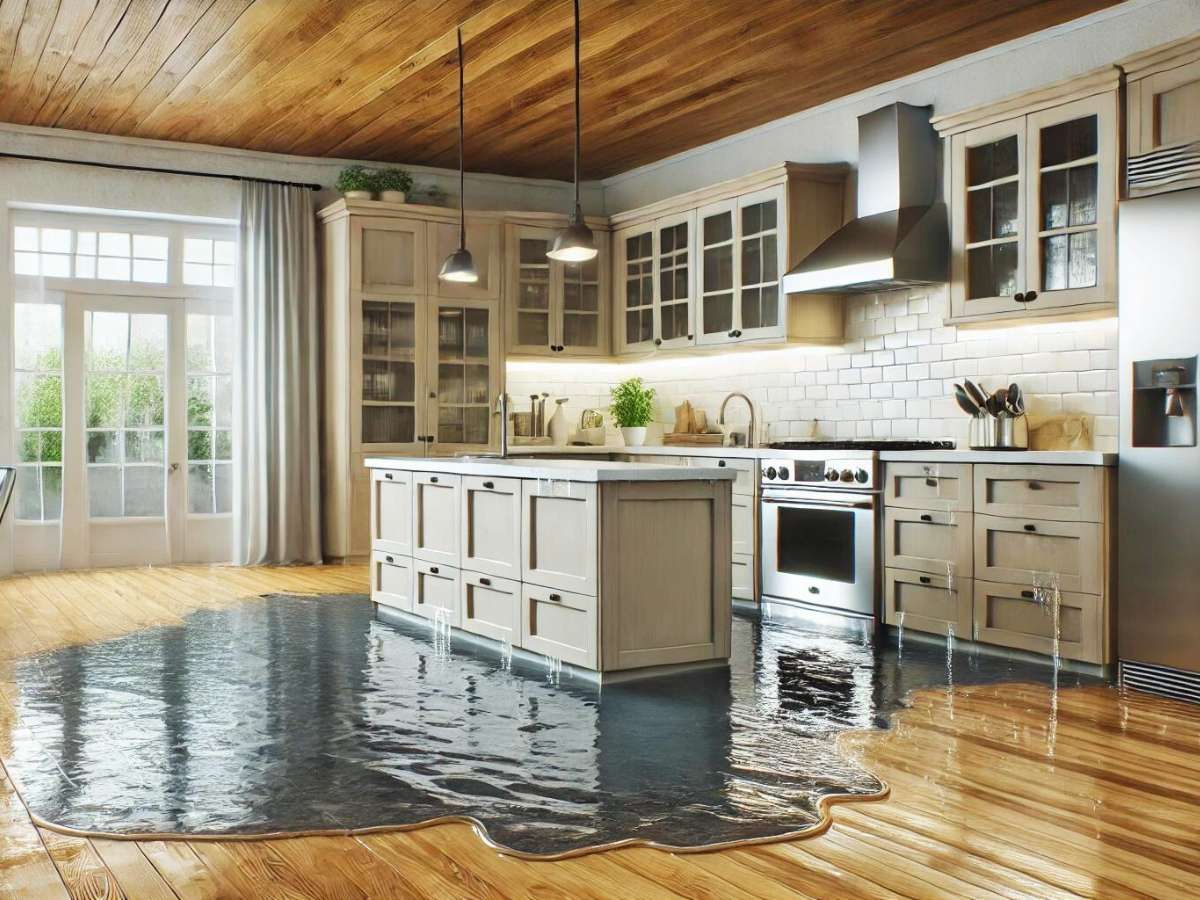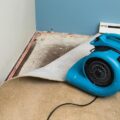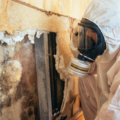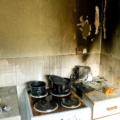
Although Singapore, a vibrant city-state known for its modern infrastructure and tropical climate, has been well-protected by its surrounding countries from most natural calamities including earthquakes, and tsunamis, it is no stranger to the challenges posed by water damage. As climate change and rapid urbanization intensify these events, the hidden danger of water damage and floodwater contamination emerges as a critical concern for public health and environmental safety. The dense urban landscape, combined with the unpredictable nature of severe weather events, makes understanding and managing water damage crucial for every property owner and resident.
This blogpost aims to educate you on the intricacies of water damage in Singapore, its causes, effects, and the importance of professional restoration services. By the end of this blogpost, you’ll understand how to protect your property and why expert intervention is often necessary. It will also delve into floods, the sources of contamination, associated health risks, environmental impacts, preventive measures, and real-world case studies, providing a holistic view of this often-overlooked aspect of flood disasters.
Types of Water Damage
Before delving into the causes and effects, it’s essential to understand the different categories of water damage:
- Clean Water Damage: This type originates from sanitary sources such as broken water supply lines or rainwater. While it poses the least immediate health risk, if left untreated, clean water can degrade and become more hazardous over time.
- Gray Water Damage: Slightly contaminated water from sources like washing machines, dishwashers, or toilet overflows (without feces) falls into this category. It may contain microorganisms and organic matter, posing some health risks.
- Black Water Damage: The most hazardous type, black water comes from sewage backups or flood water contaminated with organic matter. It harbors harmful bacteria and pathogens, requiring immediate and specialized treatment.
Common Causes of Water Damage in Singapore
Understanding the primary causes of water damage can help in both prevention and quick response:
- Heavy Rainfall and Flash Floods: Singapore’s tropical climate brings intense rainfall, especially during the monsoon seasons. Low-lying areas are particularly vulnerable to flash floods, which can cause extensive damage to properties.
- Plumbing Issues: Burst pipes, leaking faucets, and malfunctioning water heaters are common culprits. The high-rise nature of many Singaporean residences means that a single leak can affect multiple units.
- Air Conditioning System Leaks: With air conditioning being a necessity in Singapore’s climate, leaks from these systems are a frequent source of water damage, often going unnoticed until significant damage has occurred.
- Roof Leaks: Despite Singapore’s generally well-maintained buildings, roof leaks can occur, especially in older structures or after severe weather events.
- Foundation Cracks: While less common due to Singapore’s stringent building codes, foundation issues in older properties can lead to water seepage, particularly in basement areas.
- Sewage Backups: Although rare because of Singapore’s efficient sewage systems, backups can occur in sewers, leading to severe contamination and health hazards.


The Impact of Water Damage
The effects of water damage extend far beyond visible wet spots and can have long-lasting consequences if not addressed promptly:
Health Risks
- Mold Growth: Singapore’s humid climate provides an ideal environment for mold proliferation. Mold can start growing within 24-48 hours of water exposure, leading to respiratory issues and allergic reactions.
- Bacterial Contamination: Harmful bacteria, especially in cases of gray or black water damage, can pose serious health risks, including gastrointestinal illnesses and infections.
- Structural Weakening: Prolonged exposure to water can compromise the integrity of building materials, leading to warping, rotting, and even collapse in severe cases.
Property Damage
- Electrical Systems: Water intrusion into electrical systems can cause short circuits, which can pose fire risks and necessitate extensive repairs.
- Flooring and Walls: Wooden floors may warp, tiles may loosen, and drywall can become saturated, requiring replacement.
- Furnishings and Belongings: Water exposure can severely damage or destroy furniture, electronics, and personal items.
Financial Implications
- Repair Costs: The expense of restoring water-damaged property can be significant, especially if structural repairs are needed.
- Property Value Decrease: A history of water damage, if not properly addressed, can negatively impact a property’s value.
- Business Interruption: For commercial properties, water damage can impact production leading to loss of revenue.


The Water Damage Restoration Process
Professional water damage restoration follows a systematic approach to ensure thorough recovery and minimization of long-term effects:
- Assessment and Inspection
- Identifying the water source and stopping it if still active
- Assessing the extent of damage and categorizing the water type
- Creating a comprehensive restoration plan
- Water Removal
- Using powerful pumps and vacuums to extract standing water
- Removing saturated materials like carpets and padding if necessary
- Drying and Dehumidification
- Employing industrial-grade air movers and dehumidifiers
- Monitoring moisture levels in walls, floors, and air to ensure thorough drying
- Cleaning and Sanitizing
- Cleaning all affected areas with professional-grade disinfectants
- Deodorizing to remove any lingering smells
- Sanitizing salvageable belongings
- Restoration
- Repairing or replacing damaged structural elements
- Restoring affected areas to their pre-damage condition
Singapore’s Unique Flood Landscape
Floods occur when water floods typically dry land, often resulting from heavy rainfall, storm surges, or rapid ice melt. These natural phenomena vary in intensity and duration, potentially causing devastating impacts. Singapore’s geographical and climatic conditions create a distinct flood profile:
- Flash Floods: The city-state’s tropical climate brings intense, sudden downpours that can overwhelm drainage systems, especially in areas with insufficient infrastructure resulting in these which are characterized by their sudden onset and high velocity, these occur with little warning and are particularly dangerous.
- Urban Flooding: High-density development contributes to this phenomenon. Impermeable surfaces like roads and pavements hinder water absorption, leading to runoff that floods streets and properties.
Contaminants in Flood Waters
Flood waters carry a myriad of contaminants, posing significant health and environmental risks:
- Biological Hazards: When flood waters mix with sewage systems, they introduce harmful pathogens that can cause various illnesses.
- Chemical Pollutants: Industrial and agricultural areas may contribute pesticides, heavy metals, and other harmful chemicals to the flood waters.
- Physical Debris: Sediments, waste materials, and other debris can clog drainage systems, prolonging flooding and complicating cleanup efforts.
- Toxic Substances: Hazardous materials from industrial sites may contaminate flood waters, leading to severe health and environmental consequences.
The Extensive Impact of Contaminated Flood Waters
The effects of flood water contamination extend beyond immediate property damage:
- Health Implications: Exposure can lead to waterborne diseases, with vulnerable populations at higher risk.
- Environmental Consequences: Contaminants can disrupt ecosystems, harm wildlife, and cause long-term damage to soil and groundwater.
- Property Destruction: Beyond structural damage, contaminated water can corrode building materials and electrical systems, increasing restoration complexity and costs.




Why Professional Restoration is Crucial
While minor water incidents might tempt DIY solutions, professional restoration services are indispensable for several reasons:
- Expertise and Specialized Equipment: Professionals have access to advanced moisture detection tools, industrial-grade drying equipment, and specialized cleaning agents not available to the average homeowner.
- Comprehensive Damage Assessment: Trained technicians can identify hidden damage that might be overlooked by untrained eyes, preventing future issues.
- Health and Safety Considerations: Professionals are equipped to handle hazardous situations safely, including dealing with contaminated water and potential electrical hazards.
- Efficient and Thorough Restoration: Professional services can complete the restoration process more quickly and effectively, minimizing the risk of secondary damage like mold growth.
- Insurance Liaison: Many professional restoration companies can work directly with insurance providers, simplifying the claims process for property owners.
Preventive Measures
While not all water damage incidents can be prevented, taking proactive steps can significantly reduce risks:
- Regular Maintenance Checks
- Inspect plumbing systems, including visible pipes and connections, at least annually
- Check and clean gutters and downspouts regularly, especially before the rainy season
- Install Water Detection Devices
- Place water alarms near potential leak sources like water heaters and washing machines
- Consider smart water monitoring systems that can detect unusual water usage patterns
- Proper Sealing and Waterproofing
- Ensure windows and doors are properly sealed
- Apply waterproof coatings to basement walls if applicable
- Improve Drainage Around the Property
- Ensure the ground slopes away from the building’s foundation
- Consider installing French drains or catch basins in flood-prone areas
- Regular Roof Inspections
- Do professional roof inspections annually, especially for older buildings
What Can Be Saved vs. What Cannot Be Saved
In the aftermath of water damage or a flood, quick decision-making about salvageable items is crucial:
Can Often Be Saved
- Non-porous materials (metal, glass, hard plastics)
- Solid wood furniture (if dried promptly)
- Some electronics (with professional cleaning)
- Hard flooring and tiles
- Most clothing and textiles (if not contaminated with black water)
Typically Cannot Be Saved
- Porous materials exposed to black water
- Mattresses and stuffed animals
- Composite wood furniture
- Saturated drywall and insulation
- Heavily soaked paper products, books, and photographs
Case Studies
To illustrate the importance of prompt and professional water damage restoration, consider these Singapore-specific scenarios:
Case Study 1: HDB Flat Affected by Upper Floor Leak
A family in a Tampines HDB flat experienced water damage from a leak in the unit above. Quick action in contacting professional restoration services prevented mold growth and minimized damage to their belongings. The restoration team’s efficient water extraction and drying processes allowed the family to return to their home within a week, avoiding costly repairs and potential health issues.
Case Study 2: Office Building Flood Due to Heavy Rainfall
During an exceptionally heavy monsoon, a commercial building in the CBD experienced flooding in its basement levels. The building management’s immediate response in engaging professional water damage restoration services prevented extensive damage to critical electrical systems and archived documents. The swift action minimized business interruption and potentially saved millions in equipment and restoration costs.
Conclusion
Water damage in Singapore, whether from natural causes like heavy rainfall or man-made issues like plumbing failures, poses significant risks to both property and health. Addressing floods and water contamination in Singapore requires a nuanced understanding and proactive strategy. The interplay of natural and urban factors necessitates a multifaceted approach to flood risk management. Residents and policymakers can significantly mitigate flood impacts by staying informed, implementing preventive measures, and leveraging professional restoration services, safeguarding community health and safety.
When faced with water damage, time is of the essence. Quick action can mean a minor inconvenience and a major disaster. This is where professional services like Big Red come into play, offering the expertise, equipment, and efficiency needed to address water damage comprehensively and restore your property to its pre-damage condition.
For professional water damage restoration services in Singapore, consider contacting Big Red. With our team of experienced technicians, state-of-the-art equipment, and commitment to excellence, we’re equipped to handle water damage incidents of any scale. Don’t let water damage compromise your property or health – contact Big Red for prompt, professional, and thorough restoration services.




